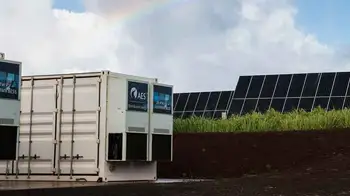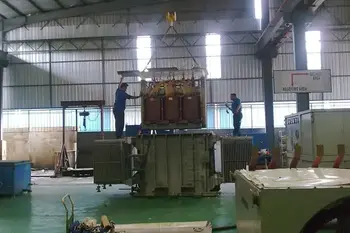Hydrogen Energy Storage And Renewable Energy
By R.W. Hurst, Editor

Battery Energy Storage Testing and Maintenance for Solar PV Systems
Our customized live online or in‑person group training can be delivered to your staff at your location.

- Live Online
- 12 hours Instructor-led
- Group Training Available
Download Our OSHA 4475 Fact Sheet – Being Aware of Arc Flash Hazards

- Identify root causes of arc flash incidents and contributing conditions
- Apply prevention strategies including LOTO, PPE, and testing protocols
- Understand OSHA requirements for training and equipment maintenance
Hydrogen energy storage converts renewable energy into hydrogen for long-term use, balancing supply, supporting grid stability, and enabling clean fuel applications across power generation, industry, and transportation.
What is Hydrogen Energy Storage?
Hydrogen energy storage is the process of producing hydrogen (H) through electrolysis, storing it, and later using it for electricity generation, heating, or as fuel.
✅ Enables renewable energy integration and grid flexibility
✅ Provides long-term, large-scale electric power storage capacity
✅ Supports decarbonization in power, industry, and transport
The Role of Hydrogen in the Energy Transition
Hydrogen energy storage (HES) is widely recognized as a promising solution for transitioning to clean and sustainable energy. It provides a way to store renewable power for extended periods, helping to stabilize power systems and reduce greenhouse gas emissions. Although hydrogen storage still faces challenges related to cost, efficiency, and safety, ongoing research and development are steadily improving performance and driving down expenses. The United States Department of Energy, along with international partners, continues to invest heavily in advancing H technologies. Hydrogen energy storage is part of a broader family of energy storage systems that provide critical solutions for balancing supply and demand in modern power grids.
Why Hydrogen is a Unique Energy Carrier
Unlike batteries or other containment systems, H has unique properties that make it well-suited for long-term, large-scale energy containment. It can be produced from diverse renewable resources such as wind and solar, then stored for later use without significant electrical loss. Hydrogen is non-toxic, non-corrosive, and can be transported through pipelines or delivered via tanker trucks. The integration of H with energy storage and the grid presents new opportunities to enhance resilience and facilitate the adoption of renewable energy on a large scale.
Electricity Today T&D Magazine Subscribe for FREE

- Timely insights from industry experts
- Practical solutions T&D engineers
- Free access to every issue
Advantages of Hydrogen as an Energy Carrier
Hydrogen stands out as an electricity carrier because it can be produced from diverse renewable sources and stored for long periods without losing its potential. It is non-toxic, non-corrosive, and transportable by pipeline or tanker, making it suitable for use in power generation, transportation, and various industrial uses.
Its advantages include:
-
Ability to support long-duration energy storage needs
-
Flexibility across sectors such as power generation, transport, and industry
-
Potential to supply clean, emission-free energy at scale
While batteries dominate today’s market, battery energy storage systems have limitations that H can complement, especially for long-duration and utility-scale applications.
Challenges in Hydrogen Storage
Despite its promise, hydrogen storage presents several obstacles. The most pressing issue is its low power density, which requires greater containment space than conventional fuels. High production and transportation costs also hinder large-scale deployment. Safety is another concern, as H is highly flammable and must be handled with care during storage and distribution.
Innovations in electrolysis, containment technology, and distribution networks are helping to address these issues. Efficiency improvements, new materials for containment, and safer handling methods are steadily advancing the field, making H a more competitive option for energy storage.
Technologies for Hydrogen Storage
Several methods are used to store hydrogen, each offering unique strengths depending on scale and application:
-
Compressed hydrogen storage – high-pressure tanks, often used for small or medium-scale applications. Other innovative methods such as compressed air energy storage and gravity energy storage highlight the range of technologies being developed to meet different grid and industrial needs.
-
Liquid hydrogen storage – cryogenic cooling that increases energy density but requires specialized insulated tanks.
-
Metal hydride storage – metals that absorb and release H, useful for compact systems.
-
Salt cavern storage – large underground formations capable of storing vast amounts of H for utility-scale needs.
These containment technologies enable the application of H across diverse industries, from powering fuel cell vehicles to supporting renewable-heavy grids.
When viewed in comparison to other containment technologies, H offers unique benefits. Unlike batteries, which degrade over time and have a limited containment duration, H can store electrical power indefinitely with minimal losses. Unlike pumped hydro, which requires specific geographic features, H systems can be deployed in a variety of locations, making them more versatile and adaptable. This flexibility makes H particularly well-suited for addressing the intermittency challenges of renewable power sources, such as wind and solar.
Future Applications of Hydrogen Energy Storage
As technology matures and costs decline, H is poised to play a central role in the future of the grid. Its versatility allows it to support multiple sectors simultaneously, providing clean power for electricity grids, transportation systems, and industrial processes.
Potential applications include:
-
Power generation and backup supply for critical infrastructure
-
Clean fuel for vehicles, trains, ships, and potentially even aircraft
-
Industrial processes requiring high-temperature heat and a continuous power supply
As nations pursue a clean power transition, comparisons between H and other approaches like long-term energy storage and solar energy storage help identify the most effective paths forward.
Looking Ahead
Modern hydrogen storage systems are evolving rapidly, with advanced solutions capable of storing H at pressures up to 700 bar. This form of pressure-based hydrogen storage is crucial to the development of next-generation H and fuel cell technologies, particularly in transportation, where vehicles must be hydrogen-fueled to achieve extended driving ranges. However, this approach requires high-pressure containment, making design and safety critical to its success. Different containment methods, including liquid H and metal hydrides, are being researched alongside compression, but 700-bar tanks remain one of the most widely deployed solutions in today’s industry.
Test Your Knowledge About Energy Storage!
Think you know Energy Storage? Take our quick, interactive quiz and test your knowledge in minutes.
- Instantly see your results and score
- Identify strengths and areas for improvement
- Challenge yourself on real-world electrical topics
Hydrogen is increasingly viewed as a cornerstone of the clean electric power transition. Its ability to store vast amounts of renewable energy, its scalability, and its adaptability make it one of the most promising solutions for decarbonizing global power systems. While challenges remain, the pace of innovation and investment in hydrogen energy containment suggests that its role will expand significantly in the coming decades, helping to build a more resilient, sustainable, and low-carbon future.
Related Articles








